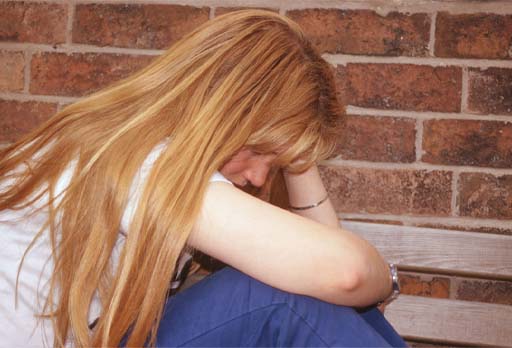2.1 Disruptive behaviour in adversity
Adversity can refer to a variety of different life experiences and can impact children and young people in different ways.
Living with a family health crisis is one example of adversity which can be a very lonely, isolating and exceptionally stressful experience for young people. The next activity introduces you to Amy, whose mother developed multiple sclerosis when Amy was 10-years-old. Looking back as a 20-year-old, Amy felt that her unmet need for support had resulted in her behaving in ways that others judged as disruptive behaviour. She found the caring responsibilities, school, and the uncertainty surrounding her mother’s ill health very challenging, and she left school to be home educated at 13 years old.
Activity _unit6.2.2 Activity 5: Amy
Step 1: Read the extracts below which are taken from a research interview with 20-year-old Amy. Can you think of any reasons why she felt unable to cope with the adversity of living with her Mother’s illness?
Extract _unit6.2.1
‘They [school] didn’t ever try getting help for me. Mum and dad tried, like when I was in primary, I had a counsellor, but I didn’t really understand it then either, so I didn’t get why I was being take into a room on my own for an hour to talk about my problems.’ (p. 34)
‘I was labelled a problem child. I was sent out of lessons, I was made to sit in the head teacher’s office and stuff like that. Mum and dad had to come in quite regularly for meetings and stuff but no-one could quite pinpoint what was causing it and stuff. When we look back now, coz obviously it was the time that mum was being diagnosed as well, they don’t think I knew how to cope with what was going on, didn’t know how to process it…then it just got a whole lot worse in secondary school.’ (p. 38)
‘I had I don’t know how many years of feeling no-one cares. Not caring, pushing you to the side, labelling you as something you’re really not, that kind of thing.’ (p. 41)
Discussion
It appears that although some of the people around Amy tried to find ways to help her, they didn’t seem to understand what her needs actually were. It seems Amy was also struggling to verbalise and comprehend her own emotions and she did not have the support to develop coping skills and strategies.
Step 2: Eventually, Amy received help from HOPE, a UK charity that provides a variety of support programmes for children and young people living with a loved one who is seriously ill. Volunteers and youth management staff working for HOPE are also young people who have experience of a family health crisis. This is what Amy said about the experience:
‘It was quite useful. People just talked about their ways of coping with stress and anxiety and that. Which is quite good because it’s kind of like talking to strangers but although its people you’ve never met before you trust them because they’re part of Hope, so you know, that was a quite interesting thing to be part of.’ (p. 45)
Why do you think she felt able to trust the ‘strangers’ in the HOPE community?
Discussion
Perhaps Amy felt an affinity towards these young people who had experienced similar challenges. They had all attended HOPE because of a health crisis that had happened to them. As suggested earlier in this session, resilience can emerge from relationships. ‘Feeling understood’ can be therapeutic in itself.
Mental health practitioners need to determine how a young person’s social environment may be affecting their health, while being aware of how this might interact with physical and mental developmental changes in adolescence. As you will appreciate, exploring the social environment can be very complex and covers sensitive territory, not least because parents and other caregivers may blame themselves when their child faces challenges to their mental health, and can feel threatened by perceived stigma of other people towards their children.
According to a recent review of the research on the effect of multiple adverse childhood experiences on health (Hughes et al., 2017), adverse childhood experiences (ACEs) are most strongly associated with sexual risk-taking, mental ill health, self-harm, problematic alcohol or drug use and violent behaviour later on in the child’s life. These are associations, meaning that although there is a link between ACEs and subsequent poor mental and physical health, this is not to say that ACEs will cause poor health in later life and it is important to note that there is no clear evidence of a cause and effect relationship. Poor health is not an inevitable outcome of ACEs. Supporting resilience in young people who experience adversity can be the key to preventing the harmful consequences of adversity.
Next, you’ll consider what makes young people resilient.

